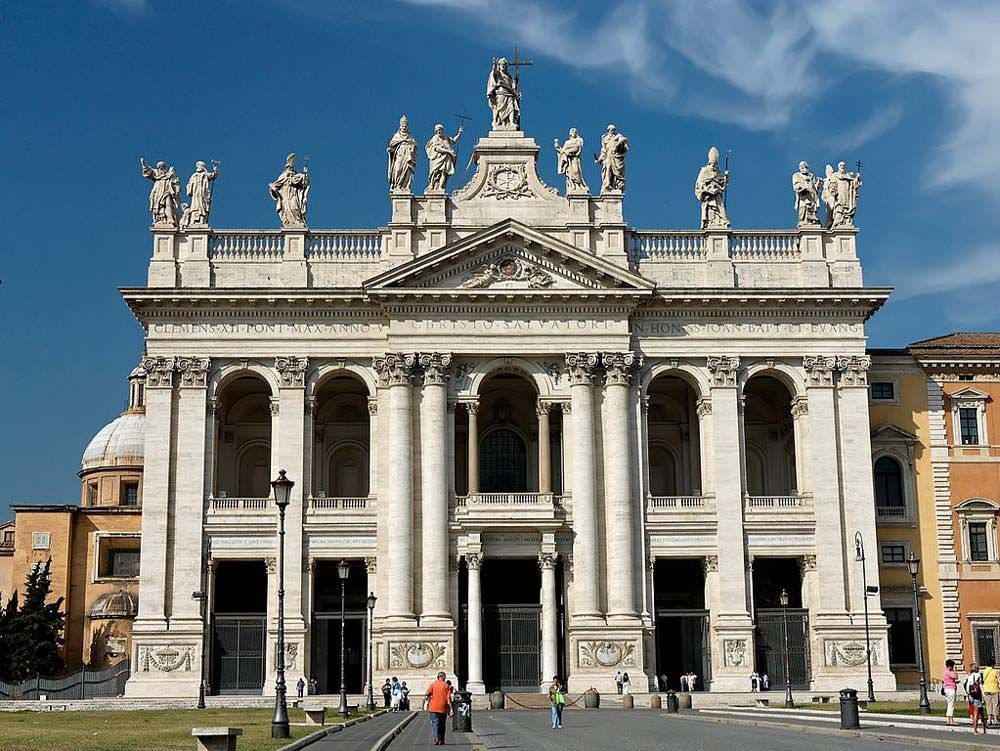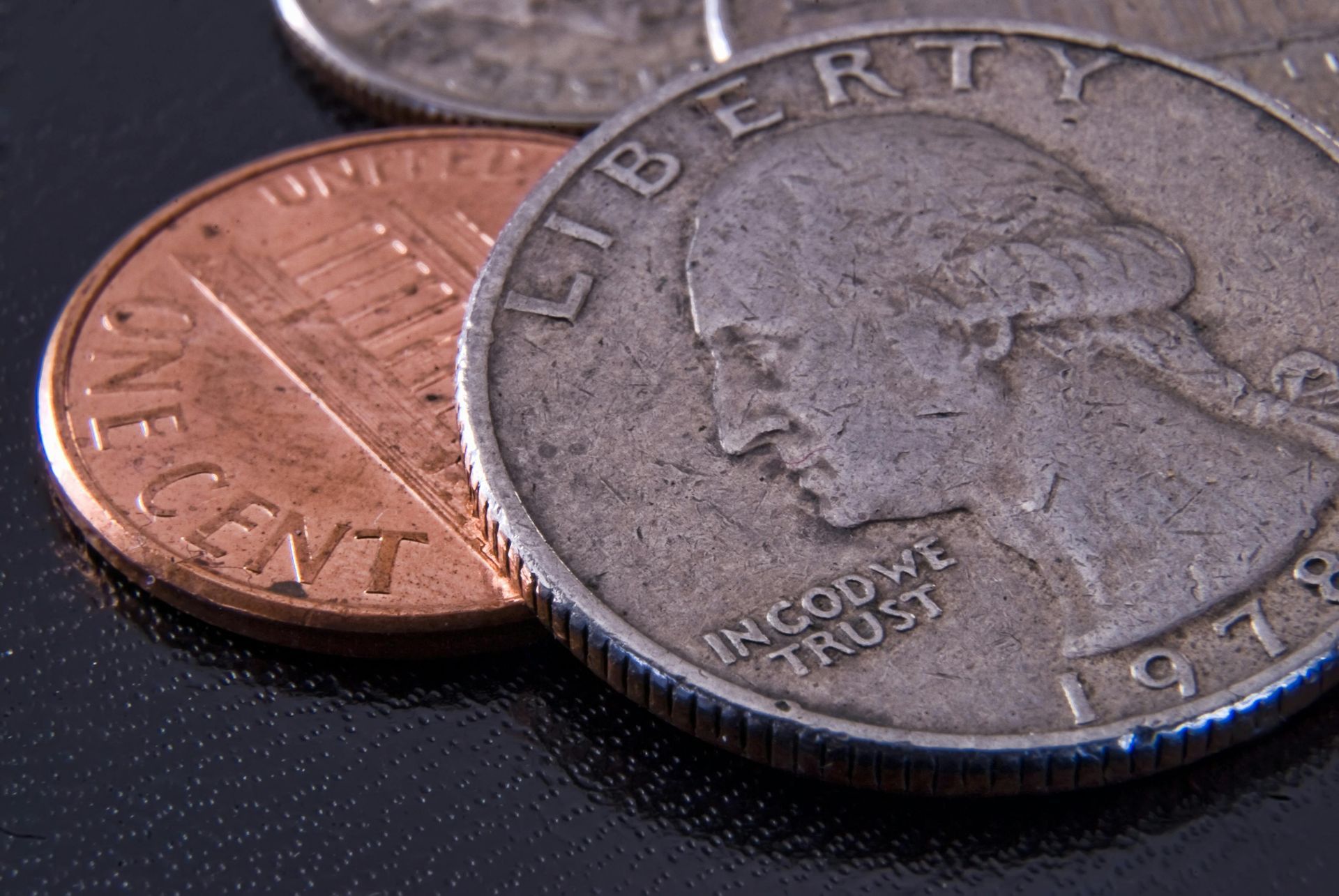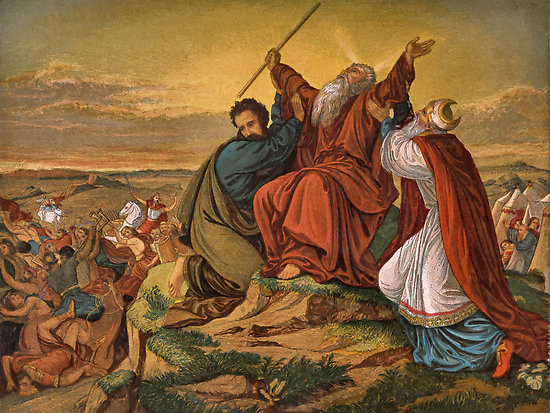Third Sunday of Lent A March 3, 2024
Third Sunday of Lent A
March 3, 2024
“And Hope does not disappoint.” Words St. shared with the community at Rome many years ago and words we hear today.
Hope is a tricky quality. It so easily slips through our fingers.
Emily Dickinson called “Hope a thing with feathers”. It can fly away so easily.
Here are the words of Dickenson:
“Hope” is the thing with feathers.
BY EMILY DICKINSON
“Hope” is the thing with feathers -
That perches in the soul -
And sings the tune without the words -
And never stops - at all -
And sweetest - in the Gale - is heard -
And sore must be the storm -
That could abash the little Bird
That kept so many warm -
I’ve heard it in the chillest land -
And on the strangest Sea -
Yet - never - in Extremity,
It asked a crumb - of me.
Think about those Israelites in the desert. A few chapters before our first reading they couldn’t wait to get out of Egypt. Once they meet some of life’s difficulties, they are all set to go back to slavery so they can spend a few moments a day sitting aside their fleshpots. Moses does what he can to instill hope in them, but hope is a quality one must nurture in oneself. Finding hope is one thing, but to nurture hope for the long run is another. Or as Dickenson said, (Hope)” It asked a crumb - of me.”
Hope is a quality we nurture in ourselves daily. Rather than grumbling about what is not, we give thanks and gratitude for what is. The Israelites so quickly forgot what it felt like to be a slave, what it felt like to eat a Passover meal, to see the first born of their masters die. How quickly do we forget.
Water becomes a sign of hope for the Israelite people, for the woman at the well, and the church.
We find hope in the water of baptism. Each time we enter a church building we renew the hope of our baptism as we bless ourselves with the baptism water.
In a few weeks, we will welcome a group of Elect to join our community through the waters of baptism. They will receive the gift of the spirit and give us all hope as we celebrate the growth of the church through baptism.
In today’s gospel, Jesus meets a woman at the well. They are at the well midday, the hottest time of day. The woman seeks to avoid her neighbors so she goes to the well when she is sure she will be alone. She brings her water jug with her. She has lost contact with neighbors and her faith. Her hope has taken flight.
She meets Jesus and finds living water. She rushes to town to tell her neighbors about the hope she has found. She leaves behind her jug, for she will not need it anymore.
She is full of the joy of the spirit and must tell others.
Later the neighbors come to her and say:
“We no longer believe because of your word;
for we have heard for ourselves,
and we know that this is truly the savior of the world.”
This is how the word is spread. Person to person. We tell someone about Jesus and in time they don’t need our testimony they develop their own relationship with him.
The water of baptism, the water of hope, gives us a new life and cleanses us from our old life. Those who are baptized are presented with a new white garment, a sign of purity and a new life.
In the waters of baptism, we begin again and find hope. We renew this hope each time we come together to pray and praise. Just like Dickenson told us Hopr “asked a crumb - of me.”, we need to put in some effort and despair turns into hope.

St. John Lateran is the cathedral of Rome. The church was built on land belonging to the Lateran family, thus the name St. John Lateran. Connected to the church is the baptistry, a large building used for baptisms. This is the oldest baptistry in Rome. The building dates to the days of Emperor Constantine and includes image of the battle of Milvin Bridge (312) when Constantine had a vision of the cross and later declared Christianity the official religion of the empire. In our first reading on this feast, we hear of the water flowing in the temple. Water is used in the sacrament of baptism. The baptistry at John Lateran is the oldest of its kind and speaks to us of the sacrament. Water speaks of the two elements of the sacrament of baptism, death and life. Those who are baptized die to their old way of life and participate in the resurrection of our Lord as they experience new life in this sacrament. In the waters of baptism, we are cleansed from the stain of original sin, and we are initiated into the body of Christ. The initiation into the body of Christ is the reason we baptize at the weekend liturgy. The person is being brought in as a member of the body of Christ, and the body of Christ gathers on the weekends at Mass. In the early church there were adults who were baptized. They would spend a period journeying with a sponsor and learning about the faith and at the Easter Vigil the bishop would come (in the early days there were no priests, just bishops), the community would gather, and the bishop would perform the rites of initiation, baptism, confirmation, and Eucharist. The OCIA (Order of Christian Initiation of Adults) recaptures this practice of the early church. Over the years it has become common to baptize infants. Canon Law, the law of the church, considers a child of 6 years to be an adult and thus is invited to enter the Order of Christian Initiation of Adults. Baptism is the first and most important sacrament. Each time we enter a church we bless ourselves with holy water to recall our baptism. In so many of our sacraments the church takes simple things and uses them to speak about aspects of our faith. Water has become a sign of the death of Christ and a sign of his resurrection. We use oil, a simple element, for anointing and healing in the sacrament of Baptism. The lit candle speaks of the light of Christ brought to the person in the sacrament and finally the cross is made on the mouth and ears of the person for hearing and speaking the word of God. Other sacraments use simple things to speak about a greater reality. We use bread and wine in the Mass; a simple gold ring is exchanged to speak about the love of God that unites a man and wife. Today we celebrate the dedication of an important space in our world church. The Church of St. John Lateran and its baptistry have allowed many to touch into the love our God for many years. We are thankful for this holy place.

Language scholars who have studied the origins of the word mammon in Hebrew and Aramaic have found clear association with words meaning wealth, riches, money, profit and possessions. But there is also evidence that one of the root words for mammon also means “that in which one trusts.” On all of our US currency — each coin and paper bill — is a simple (and, I suspect, often overlooked) phrase: “In God we trust.” This phrase was added during the Cold War to distinguish our currency, and nation, from that of the atheist Soviet Union. On each of our denominations of currency, both coins and paper bills, we have this simple reminder in whom we should be placing our trust in — God — and not what we should be placing it in: the fruit of our human activity, especially money. It is a poignant reminder to us today in light of the Gospel passage we hear and our current experience. This reminder begs us to ask two questions of ourselves and collectively as a country and society: Do we trust in God first? Always, everywhere, in everything? Or do we place our trust first in small-“g” god, or gods of human origin? In answering those questions, we might ask ourselves, what do our actions say about whether we place our trust first in God, or in humans? Where are we spending our time and treasure? This past month has brought us yet more tragic and traumatic reminders of our society’s misplaced trust. The recent spate of wounding and taking of innocent lives through gun violence in service of an ideology of retribution is just the most recent in a continuing human saga of such behavior, behavior that places trust in leading with human action to resolve differences, over our openness and trust in allowing God to lead us to a conversion of heart and to reconciliation. There is more that could be said about the responsible use of wealth in service to God. About detachment from ‘goods’ of this world — goods that God gives us out of love to draw us closer and more deeply into love with God, that we might revere God and God’s creation, but not take those goods in place of God. But in light of our continuing tragedies and the lack of reverence for human life, created by God in the image and likeness of God, of which they are clear evidence, the most important response we can offer is what St. Paul exhorts us to in his letter to Timothy, when he writes: First of all, I ask that supplications, prayers, petitions, and thanksgivings be offered for everyone, for kings and for all in authority, that we may lead a quiet and tranquil life in all devotion and dignity. This is good and pleasing to God our savior, who wills everyone to be saved and to come to knowledge of the truth. And so we will pray to God, as St Paul asks. Pray collectively for those who have suffered violence in all forms against humanity. We will pray collectively for those wounded, those who have lost their lives and their families. And then perhaps most difficult of all, we will pray for those who perpetrated this violence, and all who are tempted to perpetrate violence against humanity. We should be challenged in our prayers to pray for people we don’t want to pray for. We may find the heart that is converted is our own. In all these prayers we place our trust first and foremost in God, who desires to save us, and who “proves his love for us in that while we were yet sinners Christ died for us” (Rom 5:8). In this is our act of Faith. In this is our act of Hope.




